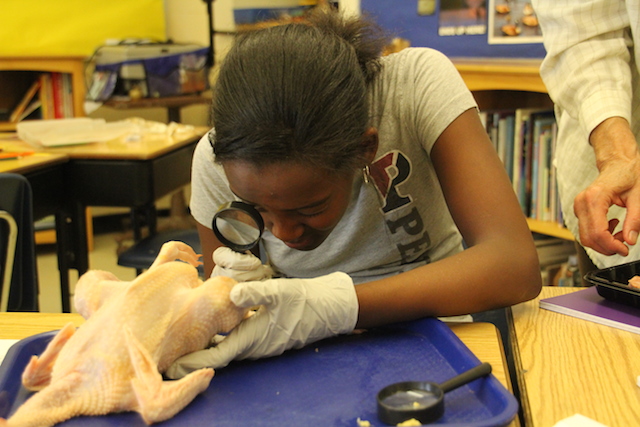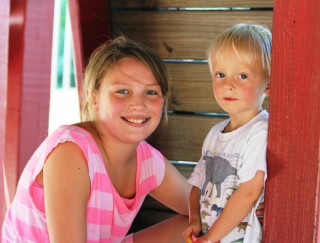Bent over chickens fresh from the market, sixth graders splashed rice wine vinegar and rubbed cinnamon on the pullets like Top Chefs vying for a stake in the next round. The setting was no TV kitchen, though, and Mrs. Porter’s students weren’t prepping these birds to serve for dinner. Science was happening, and the chicken mummification project had begun.
It’s a favorite project that integrates science, history, cultural studies, and art. “This is a great way for students to learn about the role FBI plays in decomposition,” said Mrs. Porter with a smile. “FBI is Fungus, Bacteria, and Invertebrates. By preserving the chickens they see the role all living things, especially the tiny ones, play in the life cycle. This project also connects with the upcoming archeology unit, plus the students will have a hands-on understanding of mummification when they begin their study of ancient Egypt.”
Until the mummification project, many students had never seen a chicken in a state other than fully-cooked. The process gets students very familiar with avian physiology as each bird is weighed, measured for length, girth, even smell, each calculation and observation assiduously noted and illustrated. Aside from a couple of brief bouts of squeamishness, students set about their tasks with a commitment to the scientific process. “We should name ours ‘Bob’,” mused Isadora as her team splashed rice wine vinegar over the bird. “We’re going to be working with him for a while.”
After a cinnamon rubdown “so they don’t smell,” as Henry explained, the chickens are laid to rest, two to a heavy plastic bin, filled and covered entirely with a mixture of salt and baking soda before being gently set in cool, dark places in the classroom. “We’ll bring them out in about 60 days,” Mrs. Porter said, “before beginning the next part of the process—measuring them again, then wrapping them in gauze the way the Egyptians did.”



